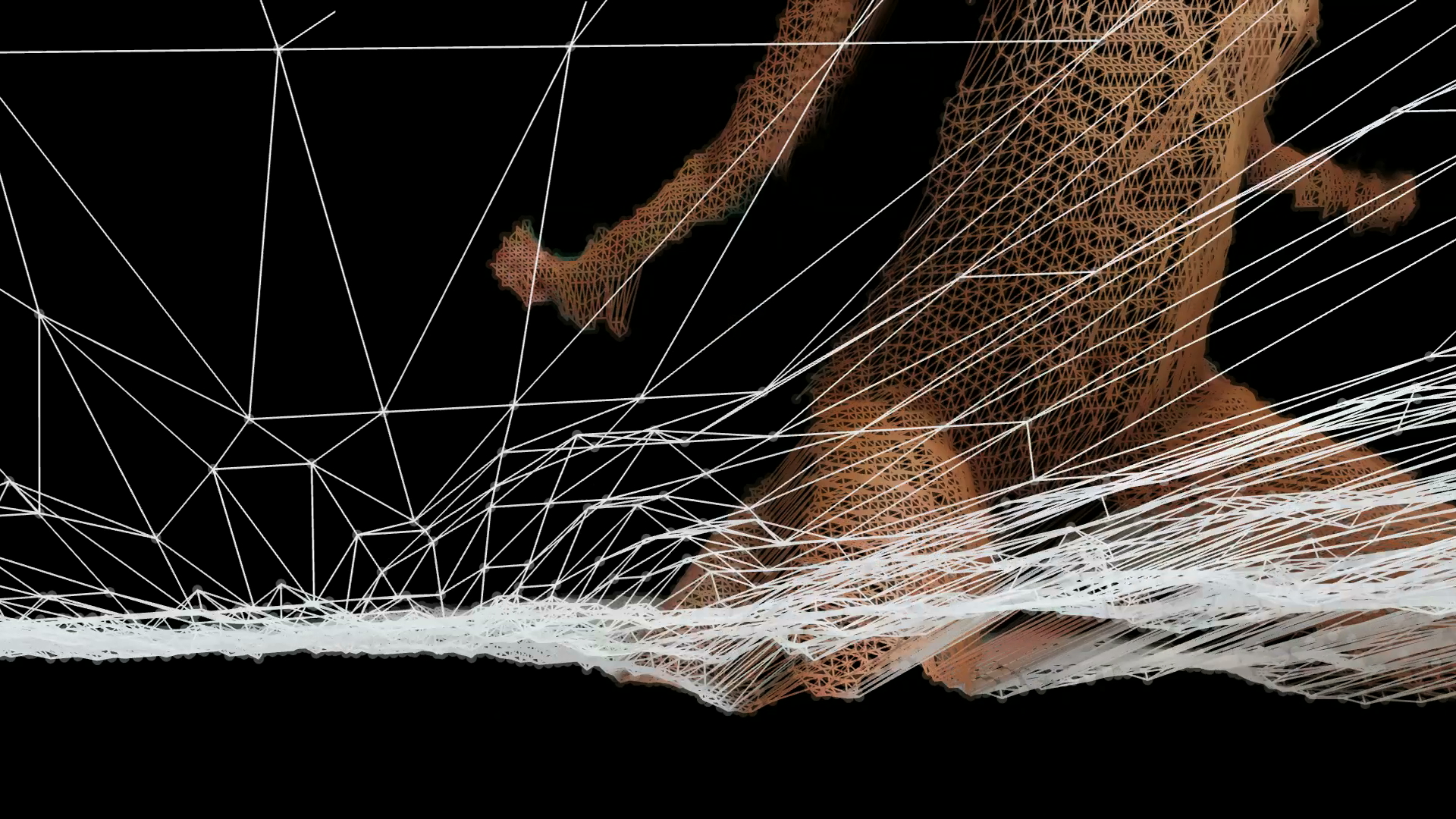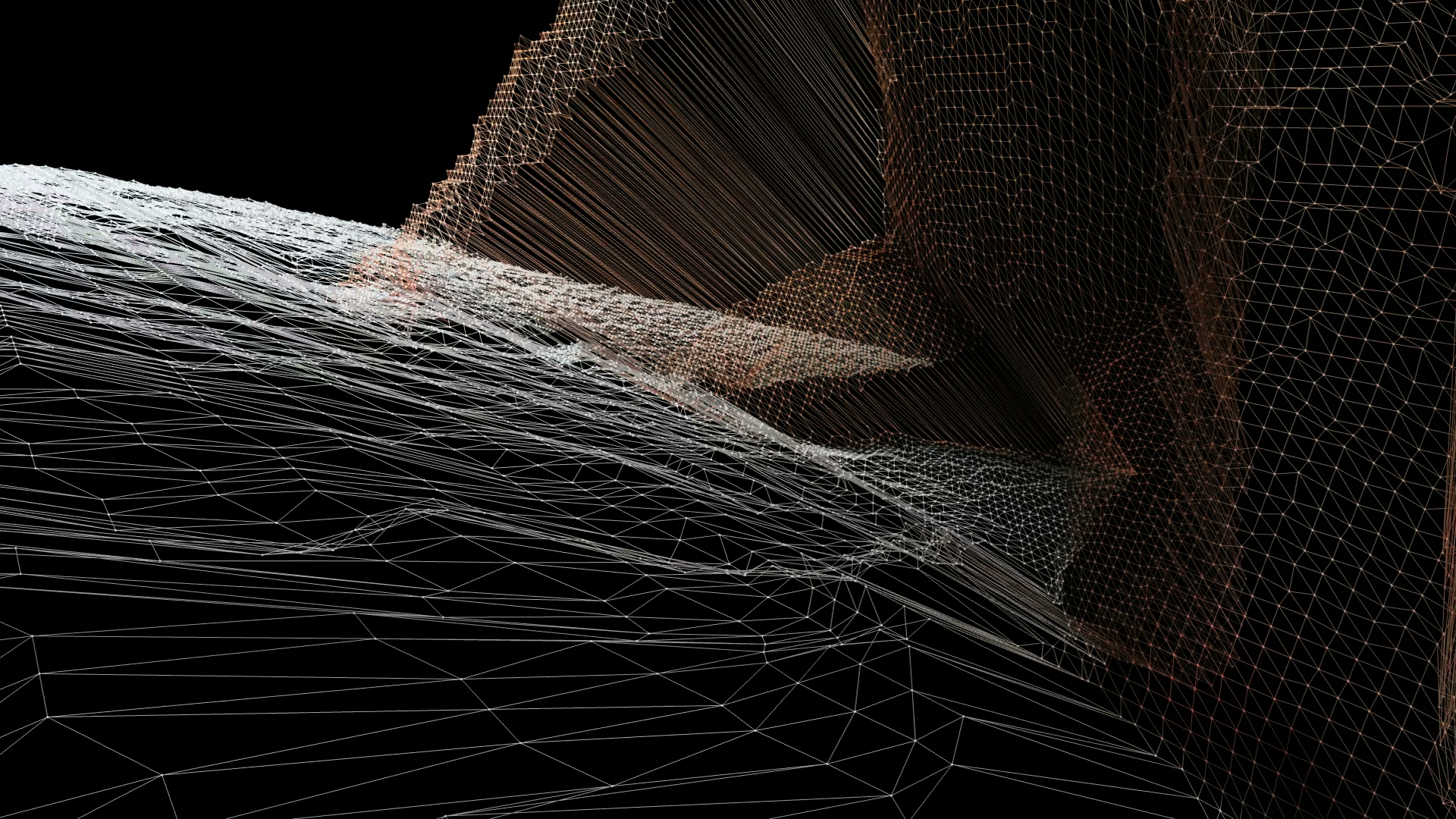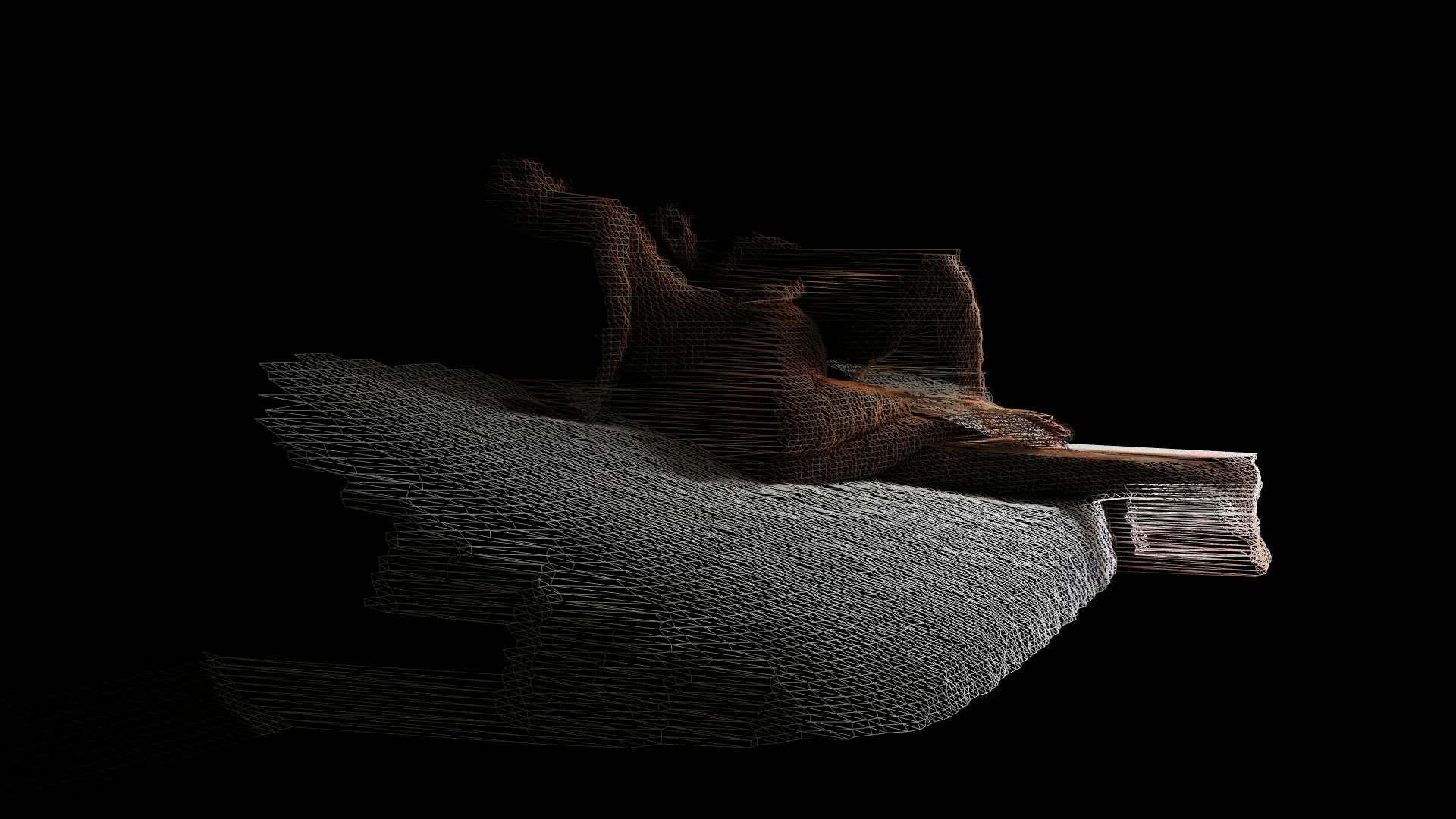

“Love is All is undeniably sexy, just not in a normal sense of the word. With the sheer audacity of its aesthetics, it shocks us out of our internet-induced erotica stupor and forces us to reconsider digital pornography not as a cheap, disposable experience but as a medium capable of reflecting on the virtually augmented state of contemporary human sexuality. We already have virtual sex through chat windows or over Skype. We flirt with each other via OK-Cupid, sexts, and emoji. It's been a long time since sex was purely physical. Gomez-Arias's video reveals this intersection of the corporeal and the digital, underlining the impact that computers have had on how we view our own bodies, especially in this most intimate of acts. Looking through computer eyes back at ourselves, we see a pornography for the future.” - Kyle Chayka.
Love is All is a four-minute and 30-second piece that includes a brief strip tease followed by a variety of sexual positions between a young man and woman. It's not like whatever kind of porn you've ever seen before; no glossiness, high budget or smoothed-over/surgically enhanced breasts/other body parts. It's pixelated, but not in the way a clip streamed over a bad internet connection in your parents' house is. Instead, the two participants in Love Is All are turned into hazes of flesh-colored dots arranged into skeletal polygons set against a pitch-black background. They're ghostly forms in a world more digital than physical.
The dots that make up the actors' bodies are derived from an infrared camera, the Kinect, which was originally designed for Microsoft's Xbox 360 system to allow players to interact with their games by jumping around their living rooms, no controller needed.
The Kinect uses a technique called 'structured light' to judge where the player is while the machine projects a known geometric pattern in infrared light onto the area it's scanning and detects how the pattern deforms when hitting objects in space, calculating depth and distance through a triangulation process in conjunction with a normal camera.
The Kinect information is mixed with footage from a normal digital camera that provides the colors visible in the final product. That mixing happens with James George's RGBD Toolkit. The software allows the user to make shots and compositions that were before impossible because it makes the camera's physical position in space irrelevant. RGBD uses the Kinect data to render an imagined shot from any angle, tracking at any speed in any direction, and zoomed in to any degree. That's why it's possible for Gomez-Arias to arrange a shot through the bed sheet, or grab a between-the-legs close-up without ever shifting the camera.
Gomez-Arias obviously appreciates the technological capabilities of the Kinect in terms of filmmaking, but it was philosophy that originally led him to the idea to shoot pornography. He decided to make a video that reflected on a quote from the philosophers Felix Guattari and Gilles Deleuze's book, A Thousand Plateaus: “Every love is an exercise in depersonalization on a body without organs yet to be formed”.




Alejandro Gomez-Arias has developed a focused expertise in a broad diversity of media, including video, actions, and drawing, which is ultimately presented as objects and installation art. Through his pursuit to present his artwork to a broad audience, he has had exhibitions in different art spaces in Mexico; Medios entre Múltiples narrativas, Galería Metropolitana UAM, D.F., 2015; CACAO, Museo Universitario del Chopo, D.F., 2013; Mitos Oficiales, IAGO Juárez, Oaxaca, México; Argentina FIVA International Video Art Festival, B.A., Germany, Köln Unlimited Kurzfilmfestival 7; Mexico//The Future is Unwritten, Palazzo Cinni, Venice, Italy, 56. Esposizione Internazionale d'Arte di Venezia, 2015; Cuba (La Habana), USA (NYC).
He has a Bachelor's degree in Fine Arts from the National School of Arts, as well as a Master's degree, made possible by a scholarship in Site Specific Art at the National Autonomous University of Mexico (UNAM). Gomez-Arias has also been awarded with two of the most important awards in Mexico, the National Prize for Young Art (2008)—which recognizes promising young talent—and the FONCA Young Creators Scholarship (2013-2014). He is currently based in Mexico City.